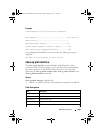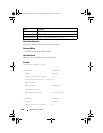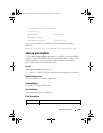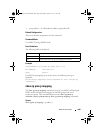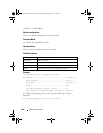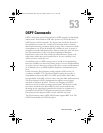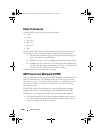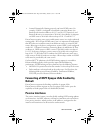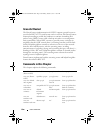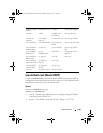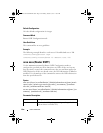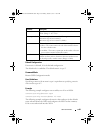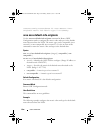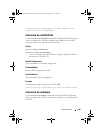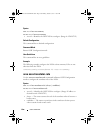
OSPF Commands 1099
• Learned Dynamically: Routing protocols can learn ECMP routes. For
example, if OSPF is configured on both links connecting Router A to
Router B with interface addresses 10.1.1.2 and 10.1.2.2 respectively, and
Router B advertises its connection to 20.0.0.0/ 8, then Router A computes
an OSPF route to 20.0.0.0/8 with next hops of 10.1.1.2 and 10.1.2.2.
PowerConnect routing stores static and dynamic routes in a single combined
routing table. RTO accepts ECMP routes, but it is important to understand
that RTO does not combine routes from different sources to create ECMP
routes. Referring to the above configuration, assume OSPF is only configured
on the 10.1.1.2 Router B interface connecting Router A and Router B. Then
on Router A, OSPF reports to RTO a route to 20.0.0.0/8 with a next hop of
10.1.1.2. If the user configures a static route to 20.0.0.0/8 with a single next
hop of 10.1.2.2, RTO does NOT combine the OSPF and static route into a
single route to 20.0.0.0/8 with two next hops. All next hops within an ECMP
route must be provided by the same source.
On StrataXGS
®
IV platforms, the ECMP hashing support is extended to
Enhanced hashing mode, which provides improved load-balancing
performance. ECMP hashing on these platforms has the following features:
• MODULO-N operation based on the number N of next hops in the route.
• Packet attributes selection based on the packet type. For IP packets, the
following fields are used: Source IP address, Destination IP address,
TCP/UDP port, IPv4 Protocol, IPv6 next header.
Forwarding of OSPF Opaque LSAs Enabled by
Default
PowerConnect supports the flooding capability of opaque LSAs.
PowerConnect cannot originate or process opaque LSAs. In the past, the
capability to flood opaque LSAs was disabled by default.
Passive Interfaces
The passive interface feature is used to disable sending OSPF routing updates
on an interface. An OSPF adjacency will not be formed on such an interface.
On a passive interface, subnet prefixes for IP addresses configured on the
interface will continue to be advertised as stub networks.
2CSPC4.XCT-SWUM2XX1.book Page 1099 Monday, October 3, 2011 11:05 AM



